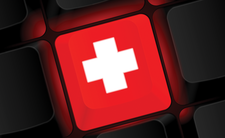SystemRescueCd – a live system that rescues data and systems
Emergency Medicine

© Lead Image © Author, 123RF.com
The SystemRescueCd live system contains numerous tools that you can use to recover deleted files or a defective system.
The SystemRescueCd live system above all offers programs with which you can reanimate defective data carriers and recover data. It includes the Firefox browser, which can also be used to search for solutions to a problem on the Internet if the permanently installed system fails to boot. Finally, SystemRescueCd provides useful tools for everyday work, such as creating or shrinking hard disk partitions. The live system relies on standard tools such as the well-known GParted for partitioning hard disks.
Bloated
As the CD in the name indicates, the SystemRescueCd fit on a CD for a long time. In version 6.0.0, however, the developers replaced the existing substructure with Arch Linux. As a result, the SystemRescueCd 6.0.2 (the latest release when this article was written), occupies almost 871MB of disk space. With a little luck, you can just about burn it onto an extra length CD (100-minute CD). But in any case, SystemRescueCd can be booted from a DVD or USB stick.
On the downside, the live system now only runs on 64-bit systems with Intel or AMD processors. If you want to save an ancient system with a 32-bit processor, you first need to remove the hard disk and, for example, connect it to another system via an external hard disk enclosure. Alternatively, you can turn to the older SystemRescueCd v5.3.2, which you can still find in the project archive [1]. Furthermore, SystemRescueCd will not start on systems where the secure boot mechanism is enabled: You first need to disable this in the BIOS or UEFI settings.
[...]
Buy this article as PDF
(incl. VAT)
Buy Linux Magazine
Subscribe to our Linux Newsletters
Find Linux and Open Source Jobs
Subscribe to our ADMIN Newsletters
Support Our Work
Linux Magazine content is made possible with support from readers like you. Please consider contributing when you’ve found an article to be beneficial.

News
-
Parrot OS Switches to KDE Plasma Desktop
Yet another distro is making the move to the KDE Plasma desktop.
-
TUXEDO Announces Gemini 17
TUXEDO Computers has released the fourth generation of its Gemini laptop with plenty of updates.
-
Two New Distros Adopt Enlightenment
MX Moksha and AV Linux 25 join ranks with Bodhi Linux and embrace the Enlightenment desktop.
-
Solus Linux 4.8 Removes Python 2
Solus Linux 4.8 has been released with the latest Linux kernel, updated desktops, and a key removal.
-
Zorin OS 18 Hits over a Million Downloads
If you doubt Linux isn't gaining popularity, you only have to look at Zorin OS's download numbers.
-
TUXEDO Computers Scraps Snapdragon X1E-Based Laptop
Due to issues with a Snapdragon CPU, TUXEDO Computers has cancelled its plans to release a laptop based on this elite hardware.
-
Debian Unleashes Debian Libre Live
Debian Libre Live keeps your machine free of proprietary software.
-
Valve Announces Pending Release of Steam Machine
Shout it to the heavens: Steam Machine, powered by Linux, is set to arrive in 2026.
-
Happy Birthday, ADMIN Magazine!
ADMIN is celebrating its 15th anniversary with issue #90.
-
Another Linux Malware Discovered
Russian hackers use Hyper-V to hide malware within Linux virtual machines.

